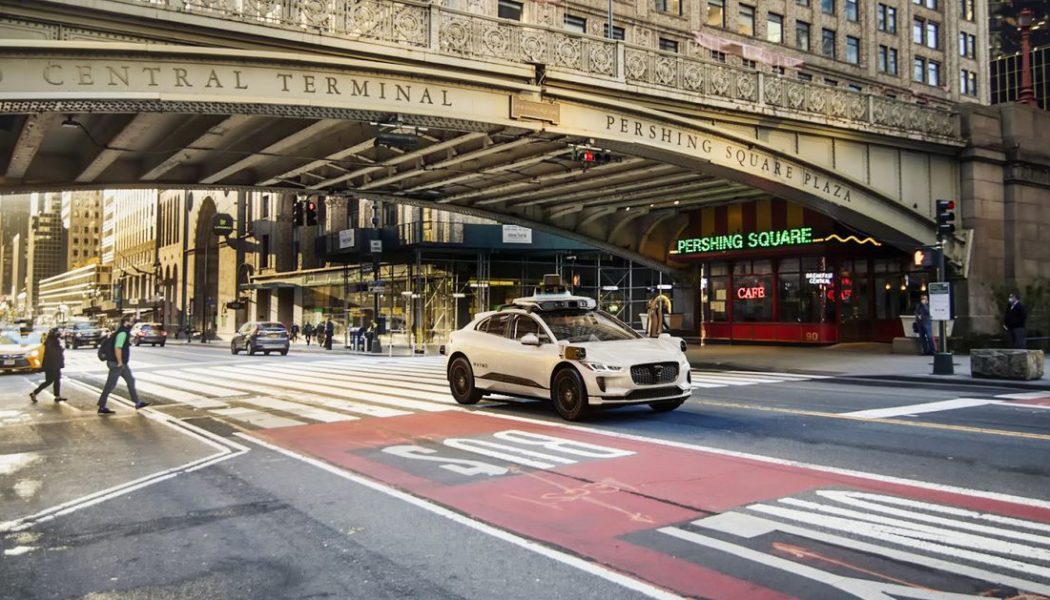
The latest autonomous vehicle company to tackle the mean streets of New York City will be Waymo. The Google spinoff is bringing a handful of cars to the Big Apple, where they will start mapping the city streets using manually driven vehicles with two people riding inside.
Waymo cited New York’s vibrant street life, “unusual road geometries” (which is a nice way of saying utterly confusing), and the likelihood of heavy rain and snow as being among the reasons the company is eager to test there. Presumedly the company is also curious to see how its vehicles will react when down-on-their-luck street hustlers slap their hoods and shout “I’m walking here!”
Waymo won’t have more than five vehicles on the street at a time to start out, a spokesperson said. They will be driving in Manhattan, primarily south of Central Park, and eventually extending down through the city to the financial district and also out to a small section of New Jersey through the Lincoln Tunnel. The fleet will consist of Chrysler Pacifica minivans, equipped with high-powered sensors and computing units, at first. Later they will include the company’s Jaguar I-Pace SUVs as well.
It’s not clear when the cars will begin to drive in autonomous mode. But New York City is obviously a huge, complex stage on which Waymo is eager to demonstrate the effectiveness of its technology.
New York City also has some of the most dangerous, congested, and poorly managed streets in the world. They are also chock-full of construction workers, pedestrians, bicyclists, and double- and sometimes even triple-parked cars. In theory, this would make it very difficult for an autonomous vehicle to navigate, given that AVs typically rely on good weather, clear signage, and less aggressive driving from other road users for safe operation.
While other states have become hot beds for AV testing, New York has been a bit of a ghost town. Part of the reason could be the state’s strict rules, which include mandating that safety drivers keep their hands on the wheel at all times and requiring state police escort at all times to be paid for by the testing company — though the state hasn’t enforced the latter requirement in recent years.
A spokesperson for Waymo said its operations “do not meet NY’s current definition for testing and are therefore not subject to permitting requirements.” The company has proactively reached out to “relevant lawmakers,” including Governor Kathy Hochul, about its plans.
Waymo says it has been in contact with “many New York policymakers, regulators, industry leaders, and non-profit groups to get their feedback, and we’re encouraged by the responses.” The company provided a quote from Eric Adams, who was just elected mayor, declaring himself “excited” to host Waymo’s small fleet of vehicles.
Of course, many residents believe that New York City doesn’t need more cars — it needs fewer. Congestion in the city is arguably worse than ever, pedestrian deaths are on the rise, and the city’s leaders have done little to stem the chaos. Waymo says its cars are safer, but they’re still cars that occupy the same amount of space as human-driven vehicles.
Waymo won’t be the first company to attempt to navigate New York City’s unique brand of vehicular chaos. In 2017, GM-backed Cruise announced plans to test its self-driving vehicles in lower Manhattan, but those plans were later scuttled with little explanation as to why. Boston-based Optimus Ride has been testing autonomous shuttles in Brooklyn, but only on private roads as part of the borough’s Navy Yard. Mobileye, a division of Intel, also recently began testing its vehicles in the city. Meanwhile, operators flocked to places with friendlier regulations (like Arizona) or ones that are more convenient to their headquarters (like California).
Waymo is operating a robotaxi service in Phoenix, some of which include completely driverless vehicles. It’s also testing its vehicles in San Francisco, where it recently received permits from the California Department of Motor Vehicles to offer rides to passengers.
But in order to give rides to paying passengers in its fully driverless vehicles, as it does in Arizona, the Google spinoff would need to apply for an additional permit from the California Public Utilities Commission. The company also has a number of vehicles in Los Angeles performing a similar task as they will in New York.









